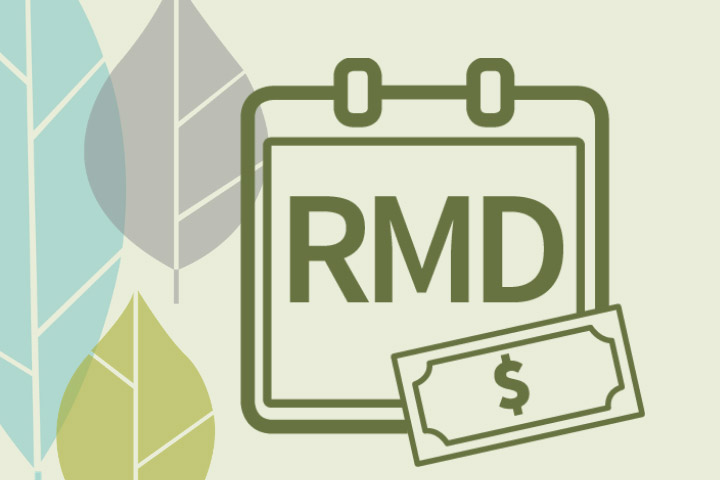In December 2022, Congress passed a budget bill that included the bipartisan SECURE 2.0 Act. Many of the changes in that bill take effect this year. Below we share an audience-favorite article that explains required minimum distributions and qualified charitable distributions. It has been updated to reflect the changes enacted in the SECURE 2.0 Act.
Some of the best tools for planning for retirement are pre-tax retirement accounts. Your income goes directly into these funds, without being taxed, and then grows tax free for years. You don’t have to worry about paying taxes on these accounts until you start withdrawing the money during retirement.
But all good things must come to an end. So tax law requires that you eventually take income from your IRAs — whether you need it or not. This is known as a required minimum distribution (RMD).
The ABCs of RMDs
R: Required. The tax code requires that you begin taking income from your IRA the year you turn 73.
M: Minimum. There is a minimum amount you must take each year. This amount is calculated based on the balance of your IRA accounts, your age, and the age of your spouse.
D: Distribution. This money must be distributed to the owner, designated beneficiary, or a qualifying charity.
The Downside
Perhaps you don’t need to access funds from your IRA. Maybe you’re still working at 73. Or you’ve retired, but you receive enough from your 401(k) and social security to get by. For you, the IRA distribution mandate may feel like more of a burden than a help. How so?
01 When you take an RMD, you need to pay taxes on the income.
02 Your RMD adds to your adjusted gross income (AGI), so it could push you to a higher tax bracket.
03 If the RMD pushes your AGI above $97,000 (single) or $194,000 (married filed jointly), you’ll have to pay higher Medicare premiums.
04 Your increased AGI could also mean more of your Social Security is taxable. This is determined by your “combined income” (combined income = adjusted gross income + nontaxable interest + half of your Social Security benefits). If your combined income is below $25,000 (single) or $32,000 (married filed jointly), you won’t owe taxes on your Social Security benefits. If your combined income falls between $25,000–34,000 (single) or $32,000–44,000 (married filed jointly), up to 50% of your Social Security benefits may be taxable. And if your provisional income is above $34,000 (single) or $44,000 (married filed jointly), up to 85% of your Social Security benefits may be taxable.
You can’t skip taking your RMDs. Doing so results in a hefty fee payable to the IRS — 25% of the distribution you don’t take in a tax year. So if your RMD for the year is $4,000 and you don’t take it, you’ll owe the IRS $1,000.
How to Avoid the Tax Consequences
The way to avoid this downside of RMDs is to use the distributions for your charitable giving. But you need to do so carefully. You don’t get the full benefits of your charitable donation if you take the RMD as cash and later give it to charity. That’s because the RMD would still be included in your AGI. (But in that case, the donation would be tax deductible.)
To make the donation a nontaxable qualified charitable distribution (QCD), your IRA custodian must send the money directly to your parish or nonprofit of choice. Increasingly, people are finding that a charitable fund at the Catholic Community Foundation of Minnesota better helps them achieve their financial or charitable goals. QCDs can be made to a donor designated fund, which benefits a single non-changeable grant recipient through grants that you direct on your own timeline. Or if you want to establish a perpetual charitable legacy during your lifetime, you can use QCDs to build a permanent endowment that will support your parish or favorite charity forever. (Unfortunately, at this time, a distribution from your IRA to a donor advised fund is not a qualified charitable distribution.)
If you want to do more of your charitable giving from your IRA, you can roll over money from another qualifying account, such as a 401(k) or 403(b) (not a Roth account). You can transfer up to $100,000 annually from your IRA to a 501(c)(3) charity — even if that is more than your RMD.
Or if you need some income, you can take a partial RMD and make the rest a QCD.
Talk to Your Professional Advisor
Your IRA is a flexible tool to leverage in your tax plan, but there are some important nuances to consider. Be sure to talk to your professional advisor about your personal situation when making plans.
The information provided above by the Catholic Community Foundation of Minnesota (CCF) is general and educational in nature. CCF and its staff do not provide individualized legal or tax advice. We recommend you consult with your attorney or tax professional regarding your unique personal situation.

